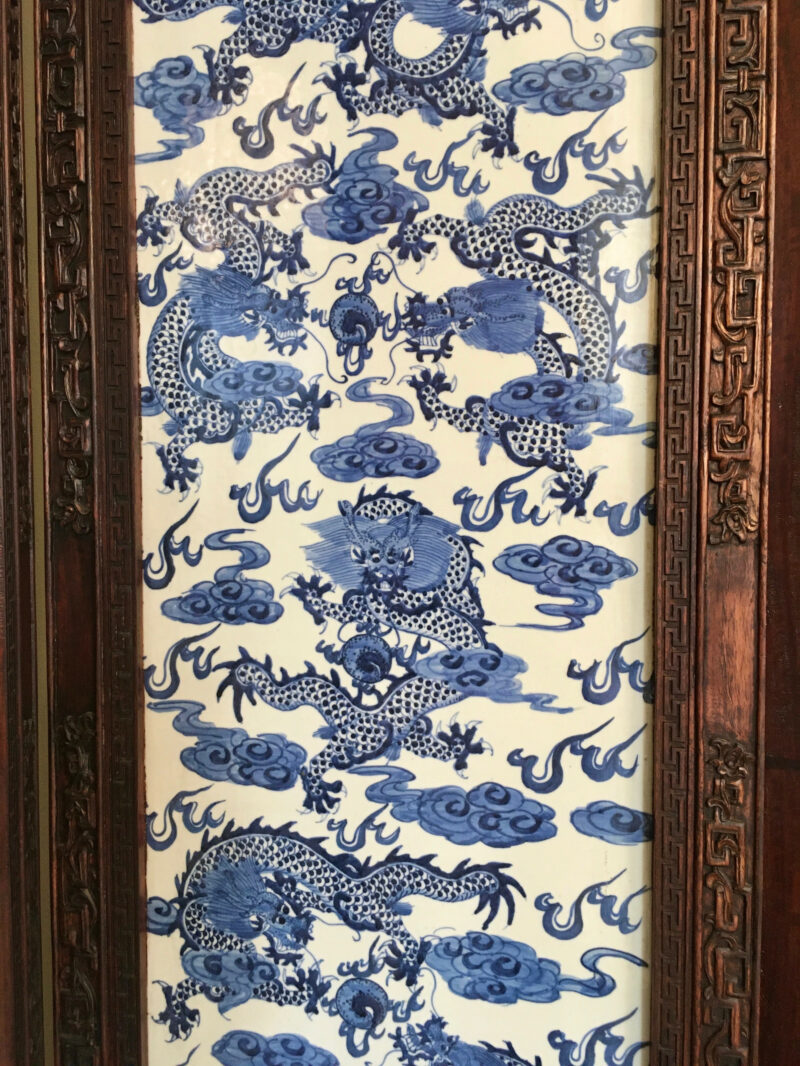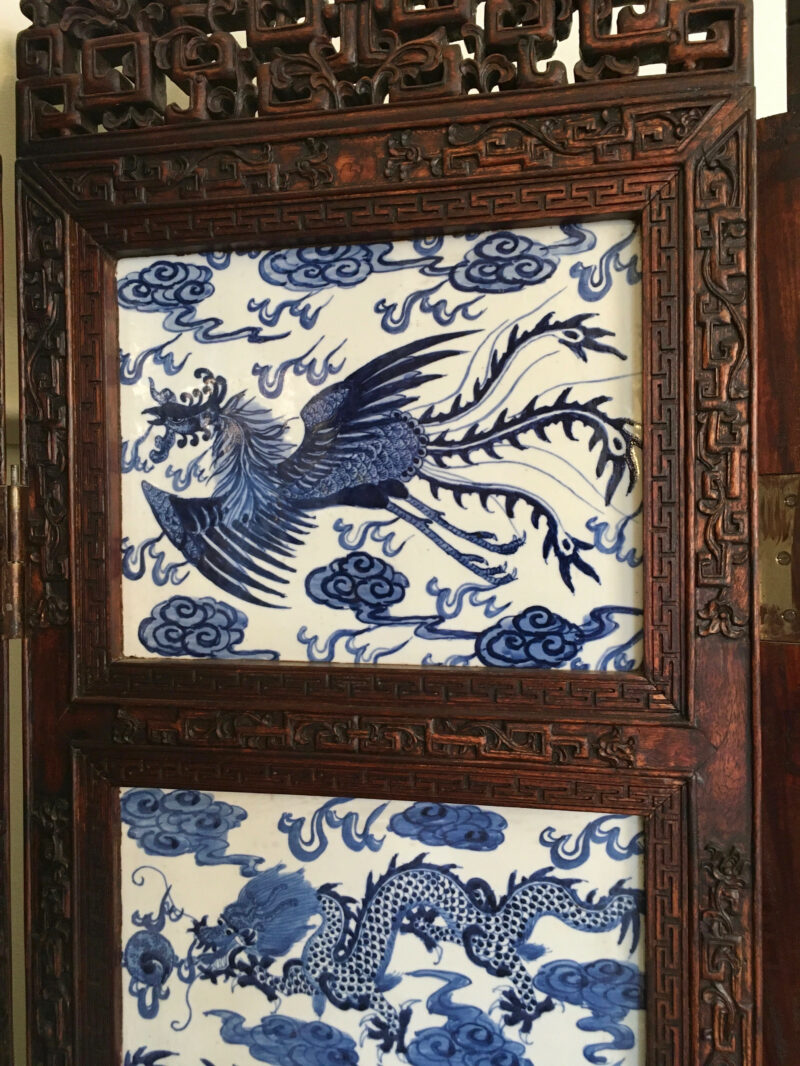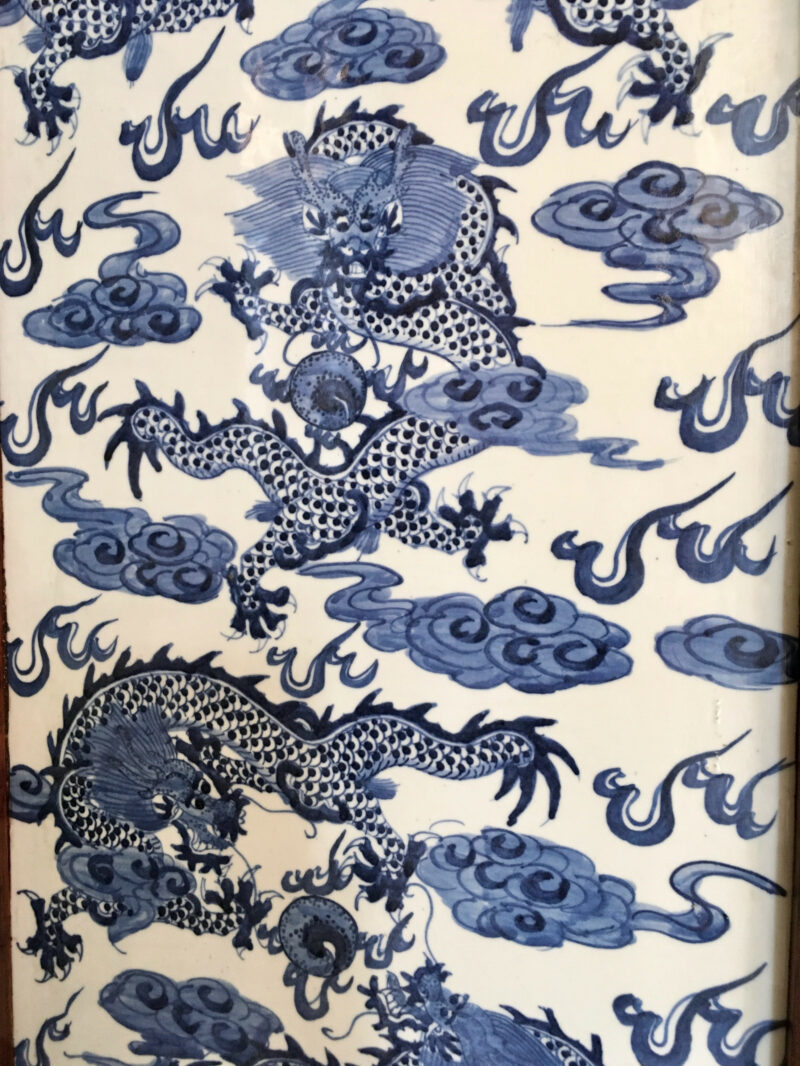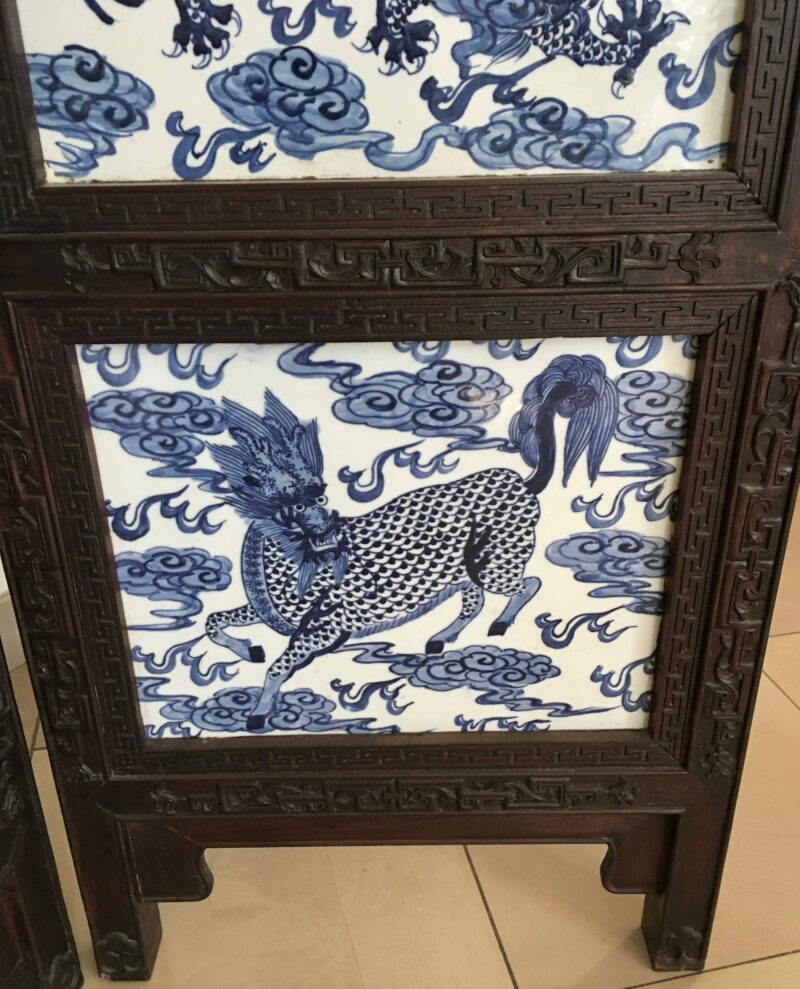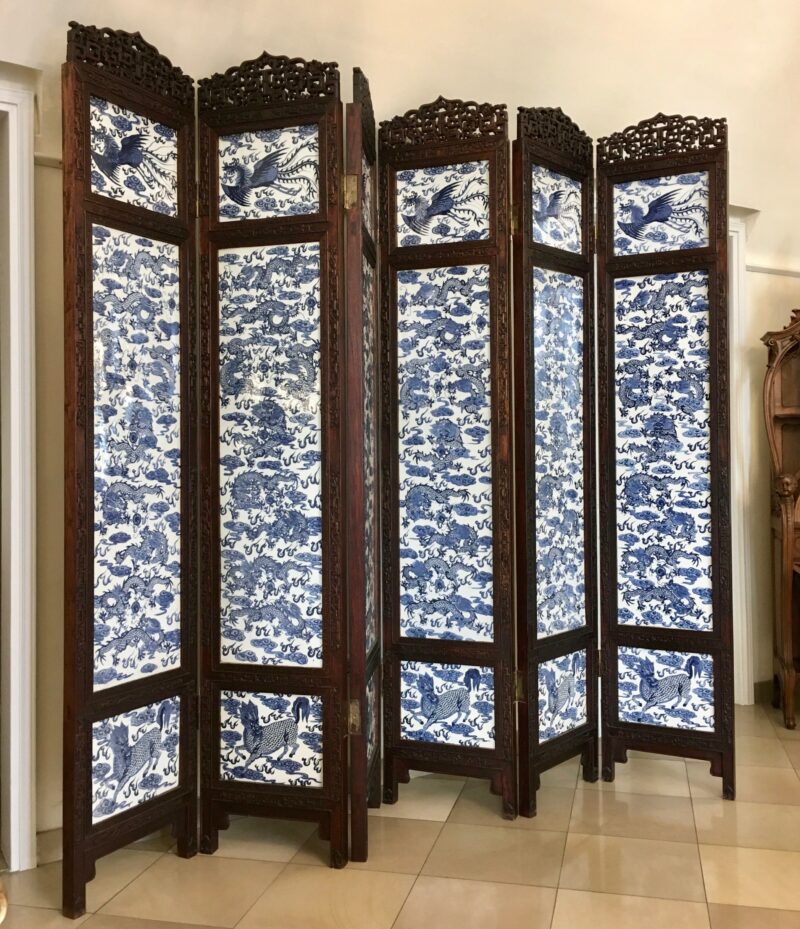
Chinese Paravent
This large, highly decorative screen consists of six panels in hardwood with carved, ornamental decoration, and white, blue painted porcelain inlays, each with a carved frame.
The taller main panels of each panel show nine, 5‑claws dragons in different positions, the so-called Lòng. The lower, smaller panels depict a Qilin, Kirin called in Japan, symbol for the unicorn, the upper row the Fenghuang representing the Chinese Emperess.
Three-dimensionally carved grids, and flower garlands are surmounting the screen.
Symbolism & History:
The middle, tall main porcelain inlays with the nine, 5‑claws Lòng dragons indicate the relation to the imperial family. The inlays above depicting a female Fenghuang, which is especially exceptional and most likely stands for the Chinese Empress herself. This order of the female Fenghuang above the Lòng depictions, most likely standing for the Emperor, is very unusual.
At this time, the imperial widow Cixi was in power, though, and led the state affairs for her underage son Emperor Tongzhi and then for her underage nephew Emperor Guangzu from 1875 to 1889. She then arrested Emperor Guangzu and took over the reigns again in 1898 till her death in 1908. Historically, she was the Empress for the longest time in power.
On the basis of those background details this beautiful screen assumably was made at the times when Empress Cixi held power and was the regent of this great empire, especially of the depiction of the Fenghuang above the Lòng. symbol, which shows her superiority over the mentioned male Child-Emperors.
The panels on the bottom showing the Qilin representing the values of happiness, love, and peacefulness.
The Mythical Creatures:
The Lòng, the Chinese Dragon, is the most known mythical creature in China and the East Asian Culture in general. It represents the Chinese Emperor, therefore also the term „Throne of the Dragon.”
The number „nine“ stands for the Dragon in China and repeats itself in the nine sons of the dragon and the nine animals of which the dragon consists. The Azur Dragon is a popular motif in art and represents the East and Springtime, and has a place on the yellow flag of the Qing Dynasty (1889−1912).
The depiction of the dragon with five claws was solely reserved for the Imperial Family and their entourage. Lower ranks, however, were only allowed to use dragons with three or four claws. It was forbidden on the death penalty to use the misuse the imperial dragon.
The Fenghuang is a mythological bird and a symbol for good luck that protects the southern part of the Emperor’s Palace. Feng stands for the male, Huang for the female.The occasionally misleading translation „Chinese Phoenix“ is actually another mythical creature and should not be mistaken. The Fenghuang has a long head with large, elongated eyes and a pointed, slightly curved beak and long plumage, and according to legend reached a age of 1000 years. He also stands for compassion, similar to the Qilin, the Chinese Unicorn.
To be highlighted is the significance of the Chinese Dragon, Lòng, being depicted together with the Fenghuang; this particular combination represents the Imperial Couple (Emperor/Dragon, Empress/Fenghuang).
The Qilin, also named Kirin, is the symbol for happiness, peacefullness, justice, and blessing of children.
In the Ming Dynasty, the animal was depicted with a dragon head with flame ornaments and ox hooves, as well as with fish or dragon scales. In the Qing Dynasty, deer antlers, a lion’s tail and a carp’s beard were added.
